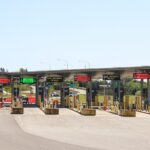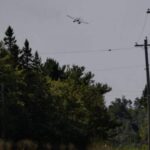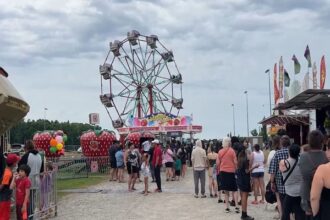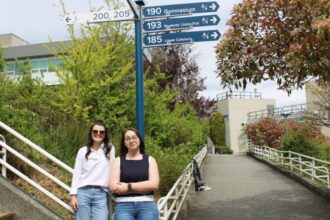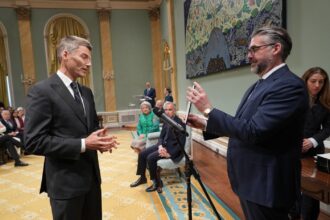The heart of Edmonton faces significant transformation as the second phase of the ambitious Valley Line West LRT project enters a critical construction stage this week. Starting Monday, motorists and pedestrians will encounter major road closures at the busy intersection of 104 Avenue and 107 Street, marking the beginning of what city officials describe as “the most disruptive period” of the multi-year transit expansion.
“This represents a pivotal moment in Edmonton’s transit evolution,” explains Brad Smid, Director of Valley Line, in an interview at the construction site. “While we recognize the temporary inconvenience these closures create, they’re essential for building infrastructure that will serve Edmontonians for generations.”
The closure will redirect thousands of daily commuters as crews begin laying the groundwork for the Valley Line’s western expansion. According to City of Edmonton data, approximately 30,000 vehicles typically navigate this intersection daily, highlighting the significant impact these closures will have on downtown traffic patterns.
Traffic engineers have implemented comprehensive detour routes, with eastbound traffic on 104 Avenue being directed south on 109 Street, while westbound traffic will follow 102 Avenue. City officials stress that these carefully planned alternatives aim to minimize congestion while allowing construction teams to work efficiently.
“We’ve coordinated extensively with emergency services to ensure response times remain optimal throughout this construction phase,” notes Smid. “Safety remains our highest priority both for the public and our construction personnel.”
The Valley Line West represents a $2.6 billion investment in Edmonton’s future mobility, connecting downtown to Lewis Farms with 14 new stops along the 14-kilometer route. When completed, the line promises to transform how residents access key destinations including West Edmonton Mall, Misericordia Hospital, and several developing neighborhoods.
Local businesses along the construction route have expressed mixed reactions. Maya Halabi, owner of a café near the affected intersection, shares concerns about immediate impacts: “We’re definitely worried about decreased foot traffic, but understand the long-term benefits. The city has been proactive in communicating with us, which helps with planning.”
Construction timelines indicate these specific closures will remain in effect until November 2024, though the entire Valley Line West isn’t expected to be operational until 2027. This timeline reflects the complexity of integrating new light rail infrastructure within established urban corridors.
The project incorporates several innovative design elements, including low-floor technology that eliminates the need for raised platforms and creates more accessible boarding options. Environmental considerations have also been prioritized, with plans for extensive landscaping and sustainable stormwater management systems along the route.
Edmonton’s broader transit strategy, as outlined in the city’s comprehensive transportation plan, positions the Valley Line as a cornerstone of efforts to reduce carbon emissions and provide viable alternatives to personal vehicle use.
As Edmontonians adjust to these significant changes, a question emerges that extends beyond temporary inconveniences: Will this transformative infrastructure project successfully shift the city’s transportation culture toward more sustainable options, or will the growing pains of construction reinforce car dependency among frustrated commuters?




